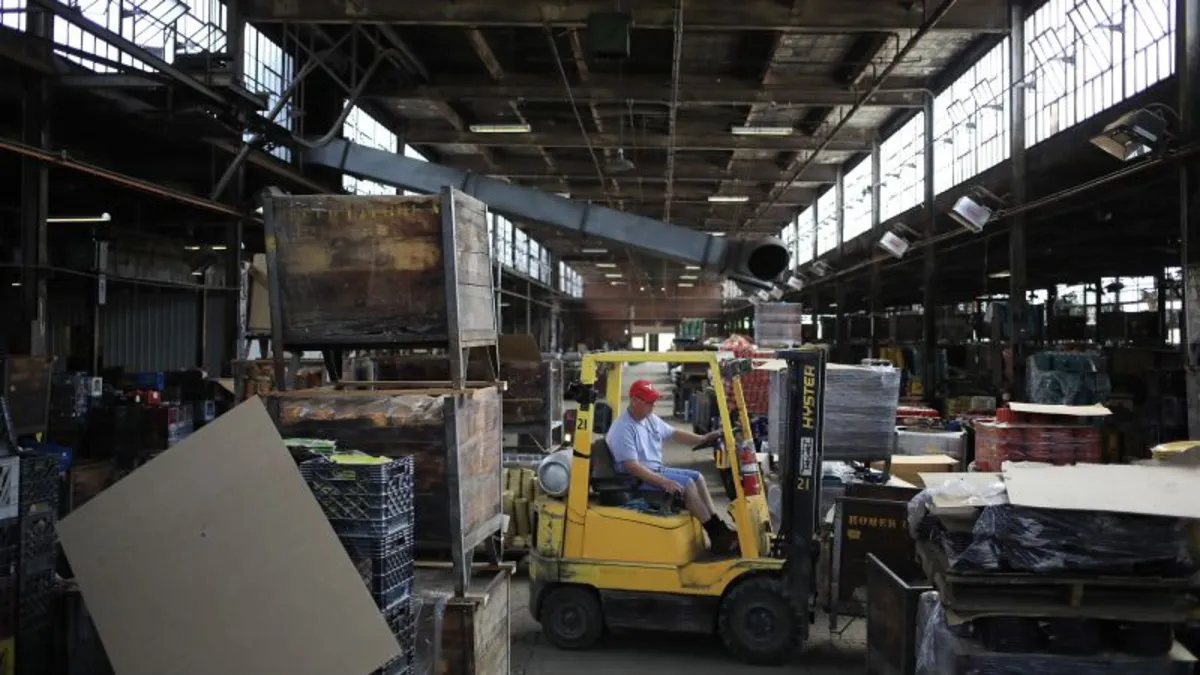
New data released on Friday indicates that US wholesale prices experienced a notable decline last month, signaling that inflationary pressures may not be escalating before reaching consumers. The latest Producer Price Index (PPI) report revealed that the prices paid to producers fell by 0.4% in March compared to the previous month, while the annual growth rate slowed sharply from 3.2% to 2.7%.
This better-than-expected PPI reading offers a glimpse into the economic landscape ahead of the full implementation of President Donald Trump’s aggressive trade policies. However, the significant drop in the overall index was partially driven by widespread concerns regarding a potential slowdown in the global economy, prompted by these drastic shifts in US trade policy.
According to the Bureau of Labor Statistics, energy prices were a major factor in the overall PPI decline, mirroring trends observed in the Consumer Price Index (CPI). The energy for final demand index plummeted by 4% for the month. Typically, energy prices increase during this time of year; however, last month saw a decrease due to a supply-demand imbalance and recession fears impacting crude oil prices.
Despite these challenges, the report also provided some positive indicators regarding inflation. Notably, wholesale food prices dropped by 2.1%, and underlying inflation continued its trend of slowing down. Excluding the often-volatile categories of food and energy, the core PPI fell by 0.1% from February (when it had increased by 0.1%), resulting in an annual increase of 3.3%—the lowest rate since September.
Economists had anticipated a monthly increase of 0.2% in prices, with an annual acceleration to 3.3%. The PPI, which gauges the average change in prices received by producers of goods and services, acts as a critical indicator for potential retail-level inflation in the upcoming months. Observers are closely monitoring this index to assess the initial impacts of President Trump’s sweeping new and proposed tariffs.
March marked the second month that tariffs on Chinese goods were in effect, increasing from 10% on all imports to 20% in early March. Additionally, global tariffs of 25% on steel and aluminum imports were implemented on March 12. In April, Trump expanded the tariff regime, introducing an across-the-board 10% tariff on imports, alongside an eye-popping 145% duty on Chinese imports.
Economists have raised alarms that the sharp escalation in America’s effective tariff rate is poised to trigger higher prices for both businesses and consumers, potentially disrupting the global economy and even leading to a recession. The latest PPI data hints at how tariff-related price pressures may be beginning to manifest.
In March, wholesale prices for iron and steel mills surged by 7.1%, marking the largest monthly increase since April 2021, a period fraught with supply chain disruptions due to the rapid recovery from the pandemic. Furthermore, the most recent Consumer Price Index data revealed a cooling of overall inflation for the goods and services commonly purchased by Americans.
Nonetheless, the anticipated impact of tariffs and an escalating trade war with China are expected to lead to price increases for consumers. This situation remains fluid, and updates will be provided as it develops.